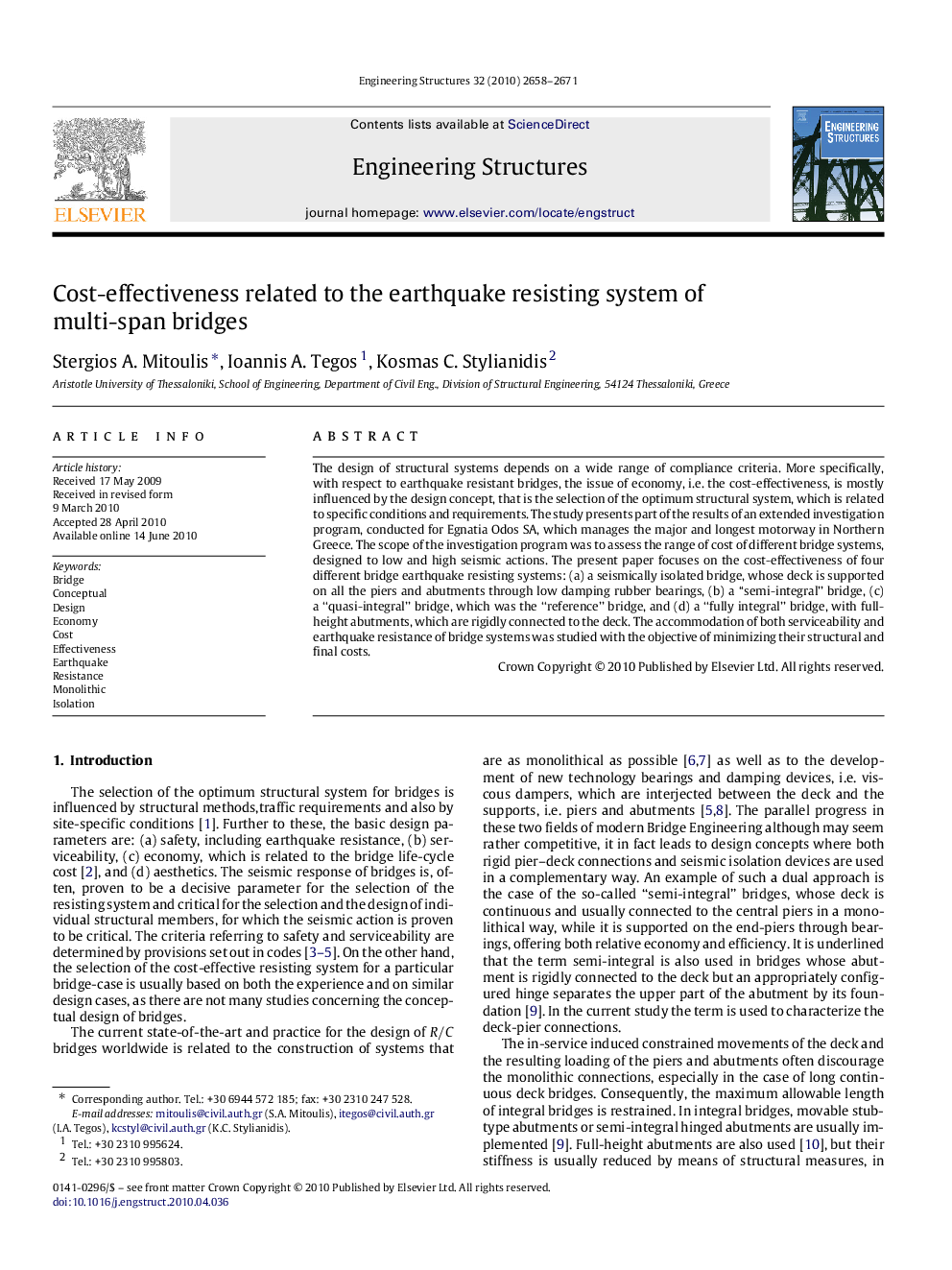| Article ID | Journal | Published Year | Pages | File Type |
|---|---|---|---|---|
| 268462 | Engineering Structures | 2010 | 14 Pages |
The design of structural systems depends on a wide range of compliance criteria. More specifically, with respect to earthquake resistant bridges, the issue of economy, i.e. the cost-effectiveness, is mostly influenced by the design concept, that is the selection of the optimum structural system, which is related to specific conditions and requirements. The study presents part of the results of an extended investigation program, conducted for Egnatia Odos SA, which manages the major and longest motorway in Northern Greece. The scope of the investigation program was to assess the range of cost of different bridge systems, designed to low and high seismic actions. The present paper focuses on the cost-effectiveness of four different bridge earthquake resisting systems: (a) a seismically isolated bridge, whose deck is supported on all the piers and abutments through low damping rubber bearings, (b) a “semi-integral” bridge, (c) a “quasi-integral” bridge, which was the “reference” bridge, and (d) a “fully integral” bridge, with full-height abutments, which are rigidly connected to the deck. The accommodation of both serviceability and earthquake resistance of bridge systems was studied with the objective of minimizing their structural and final costs.
